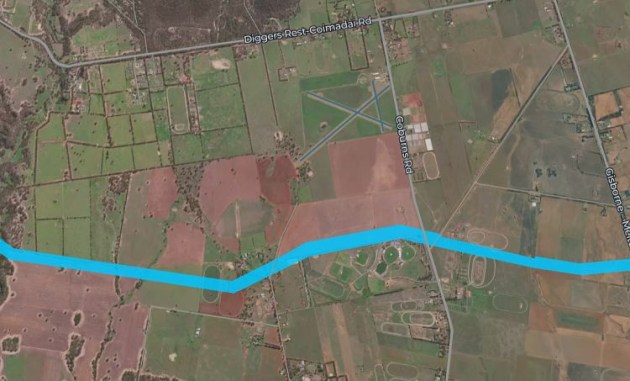It's a familiar story to aviators across Australia: encroaching infrastructure threatening safe operations at a nearby airport. This time the fight is for Melton Airport north-west of Melbourne, where a proposed new powerline has people fearing for the future of the private grass strip.
Ausnet's Western Renewables Link is a proposed 190-km overhead high-voltage electricity transmission line that will carry electricity from windfarms at Bulgana near Stawell in western Victoria, to Sydenham in Melbourne’s north-west, passing within 520 metre horizontally from one runway threshold.
The positioning creates a need for a 5.2% approach/departure gradient that exceeds the recommended profile for flight training, putting the future of the FTO and charter operation at Melton under a cloud.
According to Ausnet Environmental Effects Statement (EES) published in late June, the powerline architecture has taken into account operations at Melton, but concedes there will be moderate impact on the airport.
"The proximity of the Project infrastructure to Melton Aerodrome is such that aircraft arriving and departing on runways RWY04/22, RWY14/32 and RWY34 will need to be briefed by the aerodrome operator on the location and height of the Project
infrastructure to inform their flight plan, resulting in moderate impacts to the operation of Melton Aerodrome," the EES states.
Towers close to the landing threshold of RWY 32 will be limited to 39.6 m high and constructed as single-circuit towers side-by-side, and the lines will be fitted with standard visibility markers.
Despite these measures, Melton Air Services CEO and Head of Operations Evan Reeve is not convinced the impacts will be only "moderate".
"These measures are not enough to prevent major impacts on the airport and safe operations," he told Australian Flying. "With the towers only 520 metres from the threshold, that presents us with a 5.2% gradient needed to clear them on approach or departure. For flying training, that is recommended to not exceed 3.3%.
"This doesn’t fit our safety management system; it becomes an unacceptable risk that can’t be mitigated.
The aviation report produced by Ausnet reduces the impacts from moderate to minor by saying they’ll mark the power lines in accordance with CASR Part 139, but no documents they have produced show any markings at all. Marking of powerlines and towers does not lower the safety impact as the hazard is still present.
"Because we have both left and right-hand circuits here, all our circuits turn will turn towards that powerline, which means that every time we fly, we have to cross it twice.
"Sometimes we might be just clearing the wires; other times we could even be below that, and we won’t really have a way out at that stage."
According to the aviation section of the EES, a pilot in command needing to change an approach profile would constitute a major impact, not a moderate one as has been assessed at Melton.
If the flying school is unable to continue flight training because of the required 5.2% gradient, the impact according to the EES could be reassessed as Unacceptable.
The Western Renewables Link project is open for feedback until midnight on Monday 25 August. Submissions can be made through the Engage Victoria website.



